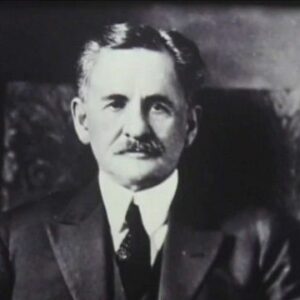Albert Abraham Michelson was the first American to win the Nobel Prize in Physics for his work on calculating the speed of light. He created the ‘interferometer,’ a device that splits a light beam into two pieces. The two halves of the same beam moved at right angles to one another before coming back together. He conducted an experiment with this equipment with his colleague Edward Williams Morley, which is known as the ‘Michelson-Morley experiment.’ He used the experiment to determine that the speed of light is 299,853 kilometers per second. For nearly fifty years, this value stayed unchanged until he was able to construct a new gadget that yielded a more precise result. This time, the speed of light was calculated to be 299,798 kilometres per second, which was later refined to 299, 774 km per second. With another particular interferometer, he was able to determine the size of the star ‘Betelgeuse’ for the first time, which was 386,160,000 km. He didn’t survive long enough to see the full results of his standardized experiment on the velocity of light. He also used the red light given by hot cadmium to determine the length of the standard meter.
Childhood and Adolescence
Albert A. Michelson was born on December 19, 1852, in Strzelno, Posen Province, Prussia, which is now Poland.
His Jewish parents came to the United States in 1855 when he was just two years old.
He grew raised in California’s mining communities before settling in Virginia City, Nevada, with his family.
Albert’s father was a rich merchant who sent his son to public schools for his early schooling.
He finished high school in San Francisco while staying with his aunt Henriette Levy Michelson.
At the age of 17, he enrolled in the ‘United States Naval Academy’ in Annapolis, Maryland.
He excelled in optics at the academy and graduated as a midshipman in 1873.
Albert Michelson’s Career
Albert A. Michelson returned to the academy in 1875 as a physics and chemistry instructor after spending two years on a naval trip.
He made his first experiment on the speed of light in Annapolis in 1877.
In 1879, he calculated that light travels at 299,864 51 kilometers per second in air and 299,940 km per second in a vacuum, respectively.
In 1879, he was sent to the United States Naval Observatory’s ‘Nautical Almanac Office in Washington, where he worked alongside Simon Newcomb.
In 1880, the academy granted him a leave of absence, and he traveled to Europe to pursue his optical studies at the universities of Heidelberg and Berlin. In Paris, he also attended the ‘College de France’ and the ‘Ecole Polytechnique.’ He spent two years in Europe. In 1881, he resigned from the service.
In 1883, he was appointed professor of physics at Cleveland’s ‘Case School of Applied Science,’ where he improved the ‘interferometer.’
In 1887, he and Morley conducted the famous ‘Michelson-Morley experiment,’ which became the norm for the next forty or more years until Michelson himself achieved a better result.
He became a lecturer at ‘Clark University in Worcester, Massachusetts, in 1889.
In 1892, he was named the first head of the newly established ‘University of Chicago physics department.
Michelson began employing a baseline measurement method in 1920, using the distance between the ‘Mount Wilson Observatory’ and ‘Lookout Mountain’ as the baseline.
The ‘U.S. Coast and Geodetic Survey started measuring in 1922 and finished in 1924. In the following two years, he conducted experiments that yielded a speed of 299,796 kilometers per second. However, this result was disputed due to a shift in baseline caused by a 6.3 magnitude earthquake on June 29, 1925, as well as other reasons.
Many tests using electricity to determine the speed of light were carried out after 1927, with lower results than those obtained by Michelson in 1926.
In 1930, he worked with Fred Pearson and Francis G. Pease in Pasadena, California, on a new experiment. He utilized a 1.6-kilometer-long tunnel to entirely expel the air.
Achievements and Awards
Albert A. Michelson received the Nobel Prize in Physics in 1907 for his research with self-made optical apparatus on the speed of light.
He also earned numerous other honors, including the Copley Medal in 1907, the Henry Draper Medal in 1916, and the Royal Astronomical Society’s Gold Medal in 1923.
Personal History and Legacy
Albert A. Michelson died in Pasadena, California, on May 9, 1931.
He has buildings and museums named after him at many colleges and the US Naval Academy.
On the Moon, he has a crater named after him.
Estimated Net worth
Albert is one of the wealthiest physicists and one of the most well-known. Albert Michelson’s net worth is estimated to be $1.5 million, according to Wikipedia, Forbes, and Business Insider.


